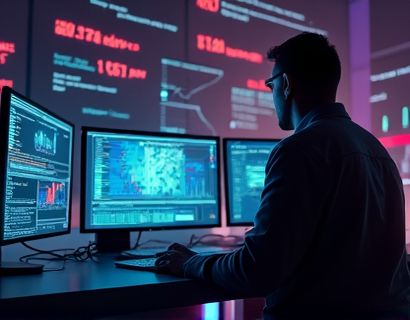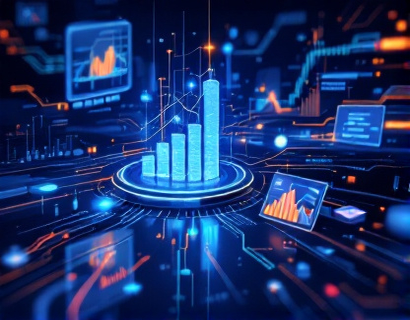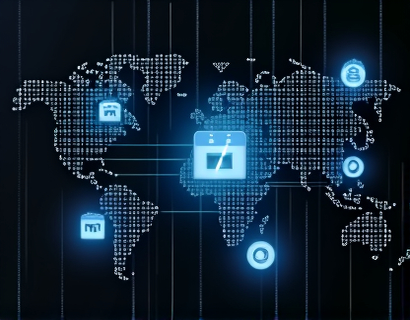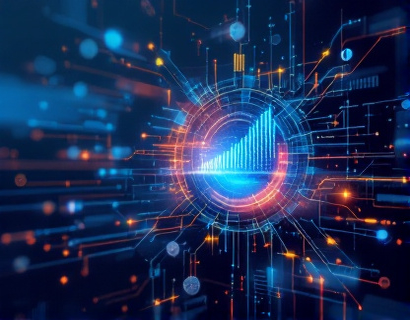Blockchain-Driven Real-World Asset Tokenization: Enhancing Liquidity and Market Accessibility
Blockchain technology is revolutionizing the asset management industry by introducing a novel method for tokenizing real-world assets. This transformation not only enhances liquidity but also broadens market accessibility, creating a more inclusive and efficient environment for asset holders and investors. The integration of physical assets into the digital ecosystem through blockchain offers a secure, transparent, and streamlined approach to asset management.
The concept of tokenization involves representing real-world assets, such as real estate, art, and infrastructure, as digital tokens on a blockchain. These tokens are unique digital representations that mirror the properties and rights associated with the underlying asset. By converting tangible assets into tokens, owners can fractionalize ownership, making it easier for a wider range of investors to participate in the market. This process significantly reduces barriers to entry, increases market liquidity, and enhances the overall efficiency of asset transactions.
Enhancing Liquidity Through Tokenization
One of the primary benefits of blockchain-driven asset tokenization is the enhancement of liquidity. Traditional real-world assets are often illiquid due to their size, complexity, and the cumbersome processes involved in buying and selling. Tokenization addresses this issue by breaking down these assets into smaller, tradable units. This fractional ownership model allows investors to purchase and sell assets more easily, akin to trading stocks or cryptocurrencies.
The liquidity improvements brought about by tokenization are particularly beneficial for smaller investors who previously lacked the capital to enter markets dominated by large institutional players. With tokenized assets, even small investments can yield returns, democratizing access to high-value assets. This increased liquidity also leads to more active trading, which in turn can drive prices to more reflective market values, benefiting all participants.
Expanding Market Accessibility
Tokenization not only enhances liquidity but also expands market accessibility. By converting real-world assets into digital tokens, these assets can be traded on global platforms, reaching a broader audience. This global reach is facilitated by the decentralized nature of blockchain, which eliminates geographical barriers and reduces transaction costs. Investors from around the world can now participate in markets that were once restricted to local or regional participants.
Moreover, the transparency and immutability of blockchain technology build trust among new market participants. Investors can verify the authenticity and ownership history of assets with ease, reducing the risk of fraud and errors. This increased transparency fosters a more open and accessible market, encouraging more individuals and businesses to engage in asset investment.
Secure and Transparent Asset Management
The security and transparency offered by blockchain are paramount in asset management. Each transaction involving tokenized assets is recorded on the blockchain, creating an immutable and auditable trail. This ensures that all parties have access to the same information, reducing disputes and increasing trust. The decentralized ledger technology also minimizes the risk of single points of failure, making the system more resilient to cyber attacks and other security threats.
Smart contracts, self-executing contracts with the terms directly written into code, play a crucial role in this process. They automate and enforce the rules of asset transactions, ensuring that all conditions are met before a transaction is finalized. This automation reduces the need for intermediaries, lowering costs and speeding up transaction times. The use of smart contracts also enhances compliance with regulatory requirements, as the terms can be programmed to adhere to specific legal standards.
Case Studies and Real-World Applications
Several industries have already begun to leverage blockchain for asset tokenization, demonstrating its practical applications and benefits. In the real estate sector, platforms are emerging that allow property owners to tokenize their properties, enabling fractional ownership and easier trading. For instance, a piece of commercial real estate can be divided into thousands of tokens, each representing a small fraction of the property. This model attracts a diverse investor base and increases the overall liquidity of the asset.
In the art world, tokenization is transforming the way artworks are bought, sold, and owned. Digital tokens can represent ownership of physical art pieces, providing a transparent and verifiable record of provenance. This not only enhances the authenticity of artworks but also makes it easier for collectors to buy and sell art without the need for extensive paperwork and intermediaries. Platforms like SuperRare and KnownOrigin are leading the way in this space, offering artists and collectors new opportunities.
The infrastructure sector is another area where tokenization is making a significant impact. Tokenizing infrastructure assets such as bridges, roads, and utilities can attract private investment, complementing public funding. This hybrid funding model can accelerate the development and maintenance of critical infrastructure, ensuring that these assets are well-maintained and efficiently managed. Countries like Sweden and the United Arab Emirates are exploring these possibilities, with pilot projects already underway.
Challenges and Considerations
Despite the numerous benefits, the tokenization of real-world assets is not without challenges. One of the primary concerns is regulatory uncertainty. As blockchain and tokenization are relatively new, regulatory frameworks are still evolving. Asset managers and investors must navigate a complex landscape of varying regulations across different jurisdictions, which can pose legal and compliance risks.
Another challenge is the technical complexity involved in tokenizing assets. Creating a robust and secure blockchain system requires expertise in multiple areas, including blockchain technology, smart contracts, and asset management. This can be a barrier for organizations that lack the necessary resources or knowledge. However, as the market matures, more specialized services and platforms are emerging to address these technical challenges.
Market volatility is another factor to consider. While tokenized assets can increase liquidity, they are still subject to market fluctuations. Investors need to be aware of the risks associated with price volatility and ensure they have a well-diversified portfolio. Additionally, the valuation of tokenized assets can be complex, as it often depends on the underlying asset's performance and market conditions.
Future Prospects and Innovations
The future of blockchain-driven real-world asset tokenization looks promising, with ongoing innovations set to address current challenges and unlock new opportunities. One area of focus is the development of interoperable blockchain platforms, allowing different tokenized assets to interact and trade seamlessly. This interoperability can create a more integrated and efficient market, where assets can be combined and managed more effectively.
Another exciting development is the integration of blockchain with other emerging technologies, such as the Internet of Things (IoT) and artificial intelligence (AI). IoT devices can provide real-time data on the condition and usage of physical assets, enhancing the accuracy of valuation and risk assessment. AI can optimize trading strategies and predict market trends, helping investors make more informed decisions.
Furthermore, the rise of decentralized finance (DeFi) platforms is opening new avenues for tokenized assets. DeFi allows for lending, borrowing, and yield farming of tokenized assets, providing additional revenue streams and increasing the utility of these tokens. This integration can further enhance liquidity and attract a broader range of investors, from traditional financial institutions to individual traders.
Conclusion
Blockchain-driven real-world asset tokenization is poised to transform the asset management landscape, offering enhanced liquidity, expanded market accessibility, and increased security and transparency. While challenges remain, the potential benefits are significant, and ongoing innovations are addressing these hurdles. As the technology matures and regulatory frameworks evolve, tokenization is set to become a cornerstone of modern asset management, empowering investors and asset holders alike.










































